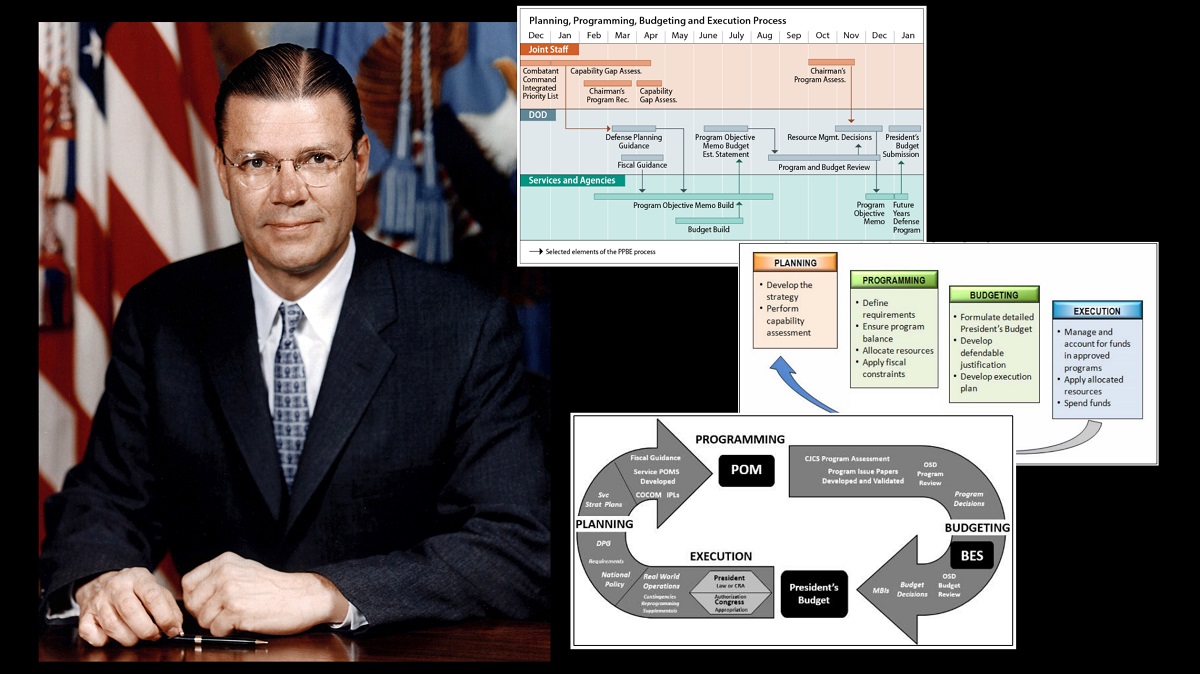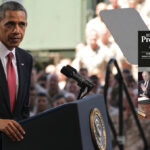
Plan, Program, Budget and Execute – repeat. It’s the strategic planning process for allocating resources in the Department of Defense that was first initiated in the early 1960s. The brainchild of Secretary of Defense Robert McNamara, it was originally the Planning, Programming, and Budgeting, or PPBS. Over the years the “System” was dropped and replaced with “Execution” yielding the current iteration, PPBE. A Better Peace is pleased to welcome retired Army Major General John Ferrari, to better understand the workings and inherent tensions of the PPBE process. The former Director of Program Analysis and Evaluation (2014-2019), MG Ferrari shares his extensive insider perspective on the incredibly complex process that was created out of a need to wrangle a growing defense institution and the associated budgets. He joins Bob Bradford and Tom Galvin to present a primer and much more on PPBE. They discuss where it succeeds, where it doesn’t, and some of the necessary characteristics of relationships and leadership that need to be understood and refined to keep the process moving forward effectively.
There’s always the big debate “am I planning to be resource constrained?” I’ve got eight hundred and five billion dollars so now I have to develop a plan that fits within that, or “am I developing a plan to meet the national security needs?” and then we have to go get the resources to do it in which case you’re generally always going to be short changed.
Podcast: Download
Subscribe: Apple Podcasts | Spotify | Amazon Music | Android | Pandora | iHeartRadio | Blubrry | Podchaser | Podcast Index | TuneIn | Deezer | Youtube Music | RSS | Subscribe to A Better Peace: The War Room Podcast
John Ferrari is a nonresident senior fellow at the American Enterprise Institute (AEI), where his work focuses on the defense budget, defense reform and acquisition, and the U.S. military. Over his 32-year U.S. Army career, Major General Ferrari, who is now retired, served as the Director of Program Analysis and Evaluation, the commanding general of the White Sands Missile Range, a deputy commander for programs at the NATO Training Mission in Afghanistan, and a strategic planner for the Combined Joint Task Force Seven in Iraq during Operation Iraqi Freedom.
Bob Bradford is the Associate Professor of Defense and Joint Processes and Henry Stimson Chair of Military Studies at the U.S. Army War College and is in his seventh year on the Carlisle faculty. Bob served 30 years as an officer in the U.S. Army, the last 20 as an operations research analyst supporting enterprise decisions.
Tom Galvin is Associate Professor of Resource Management in the Department of Command Leadership and Management (DCLM) as well as the leadership and management instructor for the Carlisle Scholars Program. at the United States Army War College. He is the author of the monograph Leading Change in Military Organizations and companion Experiential Activity Book.
The views expressed in this presentation are those of the speakers and do not necessarily reflect those of the U.S. Army War College, U.S. Army, or Department of Defense.
Photo Description: Official portrait of former United States Secretary of Defense Robert McNamara; 1961. Top right – Notional timeline of the PPBE process; Center right – Planning, Programming, Budgeting, and Execution Review Process; Bottom right – Resource Allocation Process (PPBE) Cyclic View.
Photo Credit: DoD photo by Oscar Porter, U.S. Army; Top right – CRS document “DOD Planning, Programming, Budgeting, and Execution (PPBE): Overview and Selected Issues for Congress“, July 11, 2022; Center right – DCMA Manual 4503-02, February 21, 2020; Bottom right – Department of the Air Force Planning, Programming, Budgeting and Execution System Training Program, February 2022.





What’s the point? Any average gamer on a RTS platform can cook up these observations. Can all those cute think tanks you got figure out how we ended up where were are today on any axis of consideration? The answer is, theoretically, “yes”, but in actuality, “no”. You’re just blowing air into the wind.
Can’t reasonably rethink any of their premises outside of a defined set of dogma about what happened in the past. Therefore, any threats or other challenges that reside in the cognitive spaces given that “shade” are not seen, and then those problems beget many more over time, and metastasize all across the spectrum of the society that then disintegrates under that strain.
Talk about Full Spectrum Dominance, you are under it and don’t even know it.
Love that you are still in world, mate – at least the appearance thereof, anyway! Hope you will resume making videos a some point. You are one of the very few true Gnostic Pneuma, still in the Kenoma. Glad you are still with us!